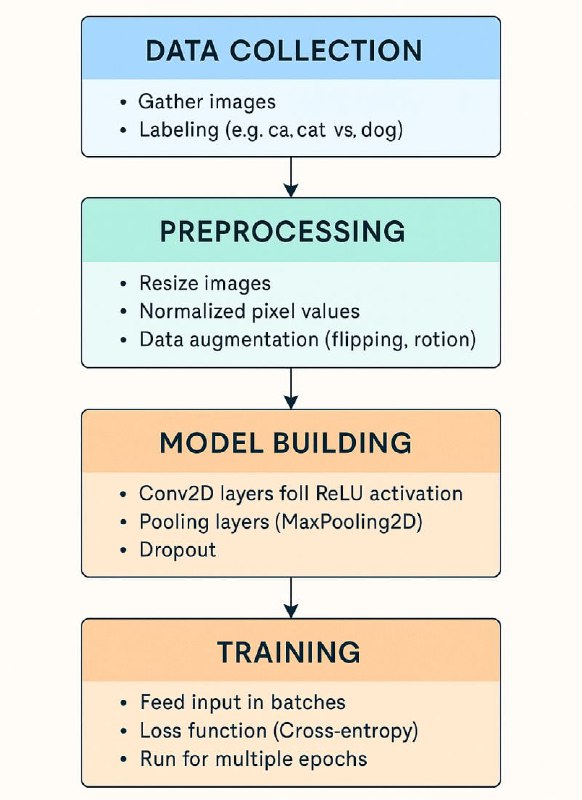tgoop.com/DataScienceM/1635
Last Update:
Mastering CNNs: From Kernels to Model Evaluation
If you're learning Computer Vision, understanding the Conv2D layer in Convolutional Neural Networks (#CNNs) is crucial. Let’s break it down from basic to advanced.
1. What is Conv2D?
Conv2D is a 2D convolutional layer used in image processing. It takes an image as input and applies filters (also called kernels) to extract features.
2. What is a Kernel (or Filter)?
A kernel is a small matrix (like 3x3 or 5x5) that slides over the image and performs element-wise multiplication and summing.
A 3x3 kernel means the filter looks at 3x3 chunks of the image.
The kernel detects patterns like edges, textures, etc.
Example:
A vertical edge detection kernel might look like:
[-1, 0, 1]
[-1, 0, 1]
[-1, 0, 1]
3. What Are Filters in Conv2D?
In CNNs, we don’t use just one filter—we use multiple filters in a single Conv2D layer.
Each filter learns to detect a different feature (e.g., horizontal lines, curves, textures).
So if you have 32 filters in the Conv2D layer, you’ll get 32 feature maps.
More Filters = More Features = More Learning Power
4. Kernel Size and Its Impact
Smaller kernels (e.g., 3x3) are most common; they capture fine details.
Larger kernels (e.g., 5x5 or 7x7) capture broader patterns, but increase computational cost.
Many CNNs stack multiple small kernels (like 3x3) to simulate a large receptive field while keeping complexity low.
5. Life Cycle of a CNN Model (From Data to Evaluation)
Let’s visualize how a CNN model works from start to finish:
Step 1: Data Collection
Images are gathered and labeled (e.g., cat vs dog).
Step 2: Preprocessing
Resize images
Normalize pixel values
Data augmentation (flipping, rotation, etc.)
Step 3: Model Building (Conv2D layers)
Add Conv2D + Activation (ReLU)
Use Pooling layers (MaxPooling2D)
Add Dropout to prevent overfitting
Flatten and connect to Dense layers
Step 4: Training the Model
Feed data in batches
Use loss function (like cross-entropy)
Optimize using backpropagation + optimizer (like Adam)
Adjust weights over several epochs
Step 5: Evaluation
Test the model on unseen data
Use metrics like Accuracy, Precision, Recall, F1-Score
Visualize using confusion matrix
Step 6: Deployment
Convert model to suitable format (e.g., ONNX, TensorFlow Lite)
Deploy on web, mobile, or edge devices
Summary
Conv2D uses filters (kernels) to extract image features.
More filters = better feature detection.
The CNN pipeline takes raw image data, learns features, and gives powerful predictions.
If this helped you, let me know! Or feel free to share your experience learning CNNs!

